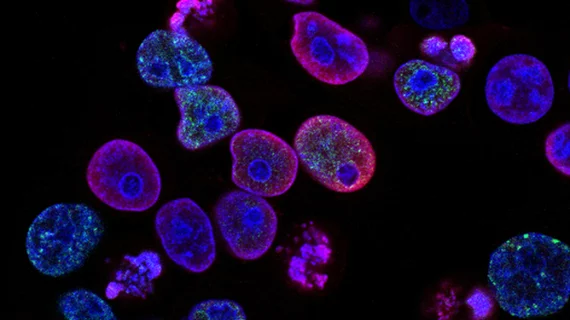AI predicts tumor metastasis from colon to lymph nodes
A convolutional neural network, or CNN, has proven adept at predicting the spread of colorectal cancer to the lymph nodes using automated analysis of histology slides.
In the study behind the finding, the tool performed similarly to a comparative manual clinical classifier that used patient data such as age, sex and tumor characteristics such as stage and location.
What’s more, when the team combined the two approaches, the results bested both the AI alone and the clinical classifier alone.
The research was conducted at the German Cancer Research Center in Heidelberg and is current in the European Journal of Cancer.
Senior author Titus Brinker, co-lead authors Lennard Kiehl and Sara Kuntz, and colleagues note that lymph node implication is a critical finding for making timely treatment decisions for patients with colorectal cancer.
They describe their work training and internally validating a CNN on whole-slide images from more than 2,400 patients in a database at their center.
Subsequently they developed an external test set using data from 582 patients in the public Cancer Genome Atlas.
On analysis, they found their SBAIP—short for slide-based AI predictor—achieved an area under receiver operating characteristic (AUROC) of 71.0%. By comparison the clinical classifier scored 67.0%.
Better still, a combination of the two classifiers yielded a project-topping performance of 74.1%.
Confirming the work-in-progress nature of the AI predictor, the team reports that the tool’s performance depended heavily on the colorectal tumor stage. Relatedly, its accuracy fell precipitously on the public atlas where the clinical classifier’s performance remained stable.
Kiehl and Kuntz et al. conclude:
Our results indicate that lymph node metastasis can be predicted in patients with colorectal cancer via CNN-based image analysis from histological slides to a similar extent as using a clinical classifier containing the patient data age, sex, T stage, tumor location and sidedness. A combination of both classifiers may further improve classification accuracy. Future research should be conducted to refine this promising approach to enable successful implementation of such diagnostic assistance systems in the clinic.”
The study is available in full for free.

